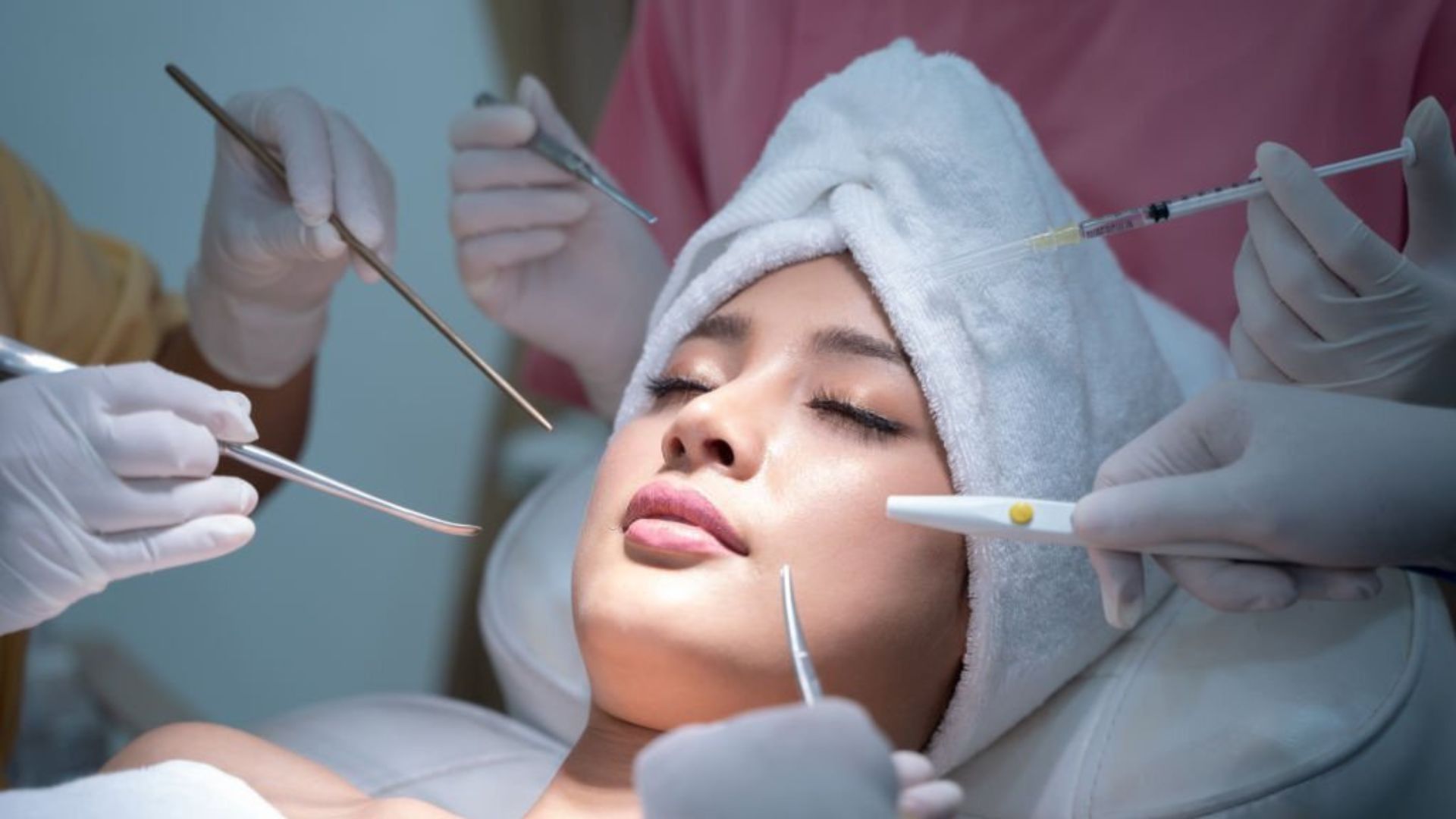
Can I Get Botox and Fillers At the Same Time?
Welcome to the world of Botox and Fillers! Botox and fillers are two of the most popular treatments available today for reducing the signs of aging, such as wrinkles and lines. Botox is a neurotoxin that temporarily paralyzes the muscles it is injected into, and fillers are substances used to plump up the skin, filling in wrinkles and lines. Many people choose to get both treatments at the same time, but it is important to understand the risks involved and consult with a qualified professional before doing so. In this article, we will explore the potential benefits and risks of getting Botox and fillers at the same time. We will also discuss the best practices for achieving a safe and effective result.
The Benefits and Risks of Combining Botox and Fillers
Botox and dermal fillers are two of the most popular cosmetic treatments for improving the appearance of wrinkles, folds, and volume loss in the face. These treatments can be used separately to achieve desired results, or they can be combined for a more comprehensive approach. Understanding the benefits and risks associated with combining Botox and fillers can help you make an informed decision about your aesthetic goals.
One of the main benefits of combining fillers and Botox is that results can be achieved more quickly. Botox works by temporarily paralyzing the muscles that cause wrinkles, while fillers are used to add volume and smooth wrinkles and folds. Using both treatments allows you to achieve the desired results faster since the filler can immediately add volume while the Botox takes a few days to take effect.
Combining fillers and Botox can also help reduce the amount of product needed for each treatment. In some cases, using both treatments together can help you achieve results with less product. This can be beneficial for individuals who want to minimize the number of treatments needed or who are looking for a more cost-effective option.
It is important to note, however, that there are potential risks associated with combining Botox and fillers. Both treatments involve injections, which can introduce the risk of infection or allergic reaction. Additionally, combining the two treatments increases the chance of complications occurring due to incorrect placement or too much product being used. To minimize the risk of complications, it is important to seek treatment from a qualified and experienced injector.
In conclusion, combining Botox and fillers can be an effective way to achieve desired results quickly and with less product. However, it is important to be aware of the potential risks associated with combining these treatments and to seek the advice of a qualified specialist before proceeding.
How to Prepare for a Botox and Filler Combination Procedure
Preparing for a Botox and Filler Combination Procedure is an important step that should not be overlooked. Before undergoing this procedure, it is important to understand the potential risks and benefits associated with it. In addition, it is important to make sure that you are properly prepared in order to maximize the results of the procedure.
First, it is important to consult with a qualified medical professional prior to undergoing a Botox and Filler Combination Procedure. During this consultation, your medical professional can provide you with information about the procedure and answer any questions you may have. It is important to discuss your medical history, any medications you are taking, and any allergies you may have to ensure that the procedure is safe for you.
Second, it is important to stop taking any blood thinners or anti-inflammatory medications at least two weeks prior to your procedure. This will ensure that the Botox and Filler are properly absorbed into the skin and that there is no risk of bleeding or bruising.
Third, it is important to avoid alcohol and smoking for a period of at least 48 hours before the procedure. This will help reduce the risk of complications and ensure that the Botox and Filler are properly absorbed.
Fourth, it is important to follow your doctor’s instructions regarding pre-and post-procedure care. This may include avoiding strenuous activities, avoiding sun exposure, and avoiding certain medications or products. It is also important to avoid eating or drinking for at least two hours prior to the procedure.
Finally, it is important to be aware of the potential risks associated with a Botox and Filler Combination Procedure. These risks may include bruising, swelling, infection, and allergic reactions. It is important to discuss these potential risks with your medical professional prior to undergoing the procedure.
By properly preparing for a Botox and Filler Combination Procedure, you can help ensure that the procedure is safe and effective. Be sure to discuss any questions or concerns with your medical professional prior to undergoing the procedure.
The Pros and Cons of Combining Botox and Fillers
Combining Botox and fillers is becoming increasingly popular as a way to enhance one’s facial appearance. Botox is used to temporarily relax the muscles in the face to reduce the appearance of wrinkles and other signs of aging, while fillers are used to replace lost volume in the face, resulting in a fuller, more youthful look. While there are some potential benefits of combining the two treatments, there are also some potential risks and drawbacks to consider.
Pros of Combining Botox and Fillers
One of the major advantages of combining Botox and fillers is that the two treatments complement each other well. Botox relaxes the muscles that can cause wrinkles, while fillers fill in the wrinkles and add volume. This can result in a more balanced, natural-looking appearance that is often more effective than either treatment used alone. Additionally, combining the two treatments can make the results last longer, as they work together to create a more youthful look.
Cons of Combining Botox and Fillers
While combining Botox and fillers can have some benefits, there are potential risks and drawbacks to consider. For example, combining the two treatments can often be more expensive than just getting one treatment. Additionally, there may be a higher risk of side effects when combining the two treatments, such as infection or swelling. Finally, it is important to note that both treatments are temporary and will need to be repeated over time in order to maintain the desired results.
Overall, combining Botox and fillers can be an effective way to enhance one’s facial appearance. However, it is important to consider the potential risks and drawbacks before deciding if this is the right option for you. It is always best to consult with a qualified professional before undergoing any type of cosmetic treatment.
Common Questions About Botox and Fillers Combination Treatments
What is a Botox and filler combination treatment?
A Botox and filler combination treatment is a combination of two non-surgical cosmetic treatments that are used to reduce the appearance of wrinkles, lines, and other signs of aging. Botox works by temporarily relaxing facial muscles, while fillers are used to plump and fill in areas of the face that have lost their volume due to aging. Together, they can create a more youthful-looking appearance.
What areas can be treated with a Botox and filler combination?
Botox and filler combination treatments can be used to treat a variety of areas on the face, including the forehead, around the eyes, lips, and cheeks. This treatment can also be used to reduce the appearance of wrinkles, lines, and even jowls.
How long do the results of a Botox and filler combination last?
The results of a Botox and filler combination treatment typically last anywhere from four to six months, although the effects may vary from patient to patient. In some cases, the results may last even longer.
Are there any risks associated with a Botox and filler combination?
Although Botox and filler treatments are considered to be safe and effective, there are some side effects and risks associated with them. These may include bruising, swelling, redness, and temporary numbness. It is important to discuss any potential risks with your doctor before undergoing any cosmetic treatment.
Understanding the Differences between Botox and Fillers Treatments
Botox and fillers are two of the most common types of aesthetic treatments used to reduce the signs of aging. Both treatments are minimally invasive and can provide a variety of anti-aging benefits, but they are not the same. It is important to understand the differences between Botox and fillers in order to determine which treatment is right for you.
Botox is a type of neuromodulator that is injected into the face and works to relax the facial muscles that cause wrinkles. It works by blocking nerve signals to the muscles, resulting in a decrease in muscle movement and wrinkles. Botox is most commonly used to reduce the appearance of wrinkles between the eyebrows, on the forehead, and around the eyes.
Fillers are injectable substances used to restore volume and provide lift to specific areas of the face. Fillers can be used to reduce the appearance of wrinkles, enhance facial contours, and revitalize aging skin. Commonly used fillers include hyaluronic acid, a naturally occurring substance found in the body that helps to maintain moisture in the skin. Fillers can also be used to plump lips, reduce the look of deep folds, and correct facial asymmetry.
The results of Botox and fillers vary depending on the individual and the type of treatment used. Botox results usually last 3-4 months, while filler results can last 6-12 months. Furthermore, the results of both treatments can be improved with a series of treatments.
It is important to note that Botox and fillers are not interchangeable. Botox is used to reduce wrinkles caused by muscle movement, while fillers are used to add volume and lift to facial features. For optimal results, a combination of Botox and fillers may be recommended. Ultimately, it is best to consult a professional to help you determine which treatment is right for you.
Q&A
Is it safe to get Botox and fillers at the same time?
Yes, it is generally safe to get Botox and fillers at the same time, as long as it is performed by a qualified and experienced healthcare professional.
What are the potential risks of getting Botox and fillers at the same time?
The potential risks of getting Botox and fillers at the same time may include bruising, swelling, redness, pain, tenderness, and infection.
How long does it take to see the results of Botox and fillers?
The results of Botox and fillers can usually be seen within a few days or weeks. However, it can take up to a few months to see the full results.
What are the benefits of getting Botox and fillers at the same time?
The benefits of getting Botox and fillers at the same time include reduced downtime, improved facial symmetry and balance, and enhanced facial aesthetics.
How often should I get Botox and fillers?
The frequency of Botox and filler treatments will depend on the individual’s needs and goals. Generally, Botox should be repeated every 3-4 months, while fillers can be repeated every 6-12 months.
Conclusion
In conclusion, it is possible to get Botox and fillers at the same time. However, it is important to consult with a qualified healthcare professional to ensure that both treatments are appropriate for your particular needs and that they will be administered safely. Additionally, it is important to follow up with your healthcare professional in order to monitor the effects of the treatments and to make any necessary adjustments.




![How Long After Botox Can You Get A Facial? [EXPLAINED] Facial After Botox](https://fitgag.com/wp-content/uploads/2022/08/Facial-After-Botox.jpg)






